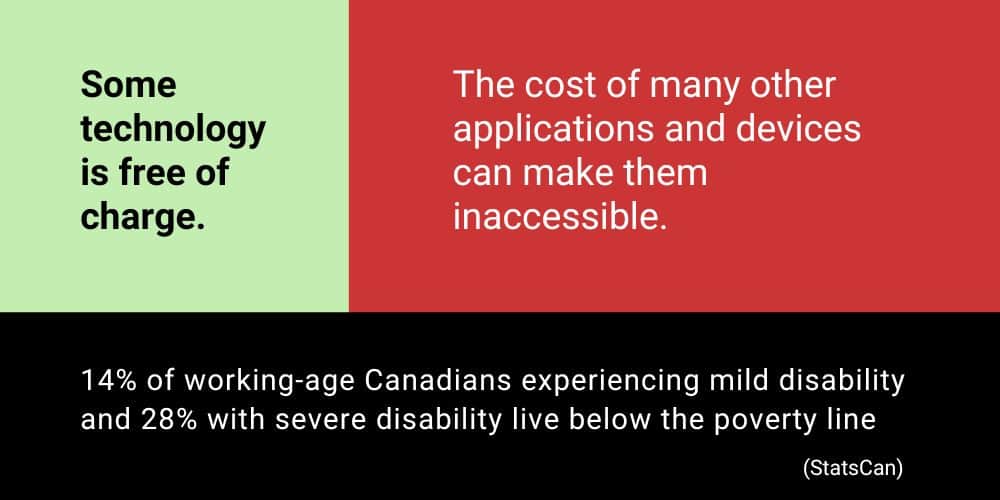Adaptive Technology
Adaptive Technology
Life is moving at the speed of technology. With handheld technology now common in everyday life, help is never far away. As much as smart phones, watches and tablets have become the norm, most users have not embraced all their available functions.
Where a quick game or directions to the closest gas station are a modern convenience at our fingertips, the power in these handheld devices can also assist in daily living for many persons with more practical needs.
Text to Speech
Adaptive technology refers to existing technology that has been modified in a way that shifts communication, tasks, visualization and other purposes to assist persons in their daily lives. As an example, the text to speech function on your standard smart phone is primarily used to take notes or provide a hands-free way to write. Text to speech also offers a distinct benefit for people who require it as a more integrated feature of day-to-day tasks.

For instance, talk to text can be used to record ideas, processes or thoughts as a memory aid. It can be used by Deaf persons to assist with conversations—particularly helpful during the pandemic for people who rely on lip-reading. Some developers are working with Deaf persons to identify areas for improvement, such as the ability to use text to speech offline and in noisy environments.
Visual Aids to Support Daily Tasks
The development of more efficient methods of connecting via cell phones, such as video calls, has had a positive effect on the community that uses visual aids. Apps like Be My Eyes and OneStep Reader have adapted existing communications technology to support people with daily tasks in homes and communities. Be My Eyes uses a unique collaborative service delivery model that guides persons who experience vision loss as they navigate stores, homes and communities.
Employers Integrating and Adapting Technology
Employers who have shifted to include videos in their training have adopted a technology which is more convenient and easily consumed. In addition, organizations that make written transcripts and subtitles available are ensuring they consider gaps for team members who may need information in a different format.
Employers who adhere to health and safety legislation are using adaptive technology through visual alerts for fire alarms and machinery proximity indicators. While technology has always been in the workplace, it has not always been recognized or used as adaptive technology.

The effort of adding technology into existing processes enhances the user experience and can improve employee engagement and productivity. Accepting and integrating adaptive technology to improve an employee’s ability to perform an activity can contribute to an organization’s ability to approach problems in new ways. This type of creative troubleshooting can lead to innovation, which can boost an organization’s resilience and long-term sustainability.
Embracing technological development and creative utilization of current technology can help shape the future of your organization and your own ability to navigate what comes next.
Written by Chantelle Painter, a consultant and business and relationship development professional with over 20 years’ experience in corporate retail and non-profit collaboration. Chantelle is skilled in Relationship Building, Coaching, Retail, Customer Satisfaction, Driving and Measuring Engagement, and Policy Development.

